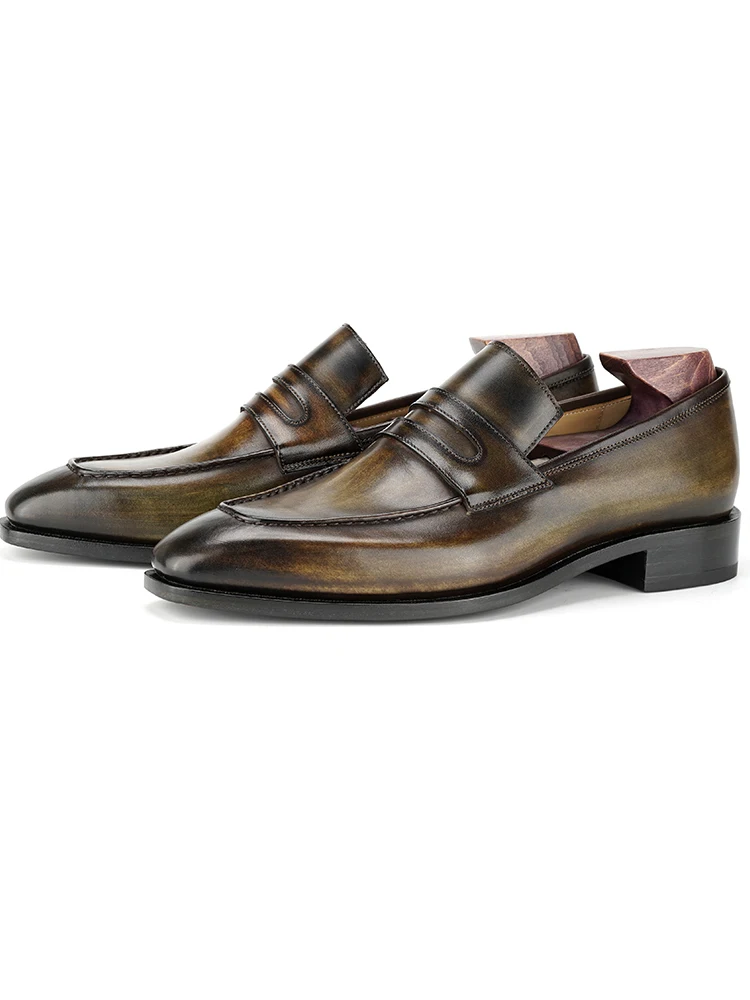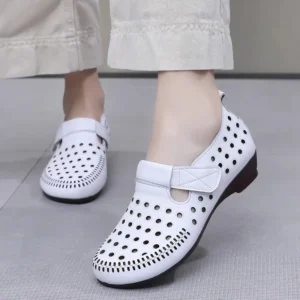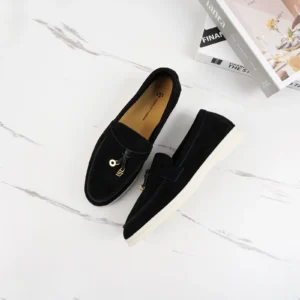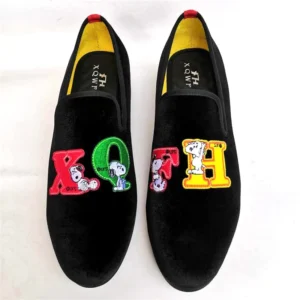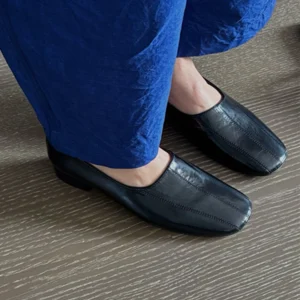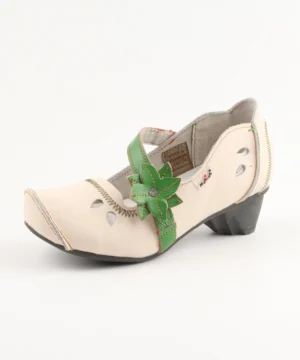Introduction
Proper care is the secret to keeping your leather and suede items looking beautiful for years—even decades. While both materials are premium and luxurious, they require distinctly different approaches to maintenance and cleaning. Without appropriate care, leather can crack and lose its supple quality, while suede can become matted, stained, and worn.
The difference in longevity between well-maintained and neglected items is striking:
* Well-cared-for leather items can last 20+ years
* Neglected leather often deteriorates within 2-3 years
* Properly maintained suede retains its distinctive texture and appearance for 10+ years
* Poorly cared for suede can look shabby within months
In this comprehensive guide, you’ll learn how to identify your materials properly, select the right tools and products, and develop effective routines for cleaning, conditioning, and protecting both leather and suede. Understanding the fundamental differences between leather and suede care will help you preserve not just the appearance of your items, but also their value and functionality.
Understanding Your Materials: The Fundamental Differences
Before diving into specific care instructions, it’s essential to understand what makes leather and suede different.
Leather is animal hide that has been processed through tanning to prevent decomposition and create a durable material. The outer side of the animal skin becomes the smooth, finished surface we recognize as leather. Different grades exist:
- Full-grain leather: Includes the entire top grain with natural markings; strongest and most durable
- Top-grain leather: Slightly sanded surface with a thin protective finish; more uniform appearance
- Corrected-grain leather: Heavily processed with artificial grain patterns embossed
- Bonded leather: Made from leather scraps bonded together; least durable
Suede, on the other hand, is created when the inner layer of a hide is split from the top, and the resulting surface is buffed to create its distinctive soft, napped texture. This processing difference is why leather and suede maintenance requirements vary significantly.
The fundamental structural differences affect how these materials interact with water, oil, and everyday wear:
| Characteristic | Leather | Suede |
|---|---|---|
| Water resistance | Naturally somewhat resistant | Highly absorbent and easily damaged |
| Texture | Smooth, sometimes glossy | Soft, fuzzy nap with raised fibers |
| Cleaning approach | Can handle mild liquids | Primarily dry cleaning methods |
| Conditioning needs | Requires moisture replenishment | No conditioning needed; requires texture maintenance |
| Primary vulnerability | Drying and cracking | Matting, staining, and water damage |
Essential Care Tools for Leather and Suede
Having the right tools on hand makes proper care much easier and more effective. Here’s what you’ll need for each material:
Leather Care Essentials:
* Microfiber cloths (lint-free for applying products)
* Leather cleaner (pH-balanced formula)
* Leather conditioner appropriate for your leather type
* Horsehair brush (soft bristles for gentle cleaning)
* Leather protectant spray or cream
Suede Care Essentials:
* Suede brush (preferably with brass or rubber bristles)
* Suede eraser (for spot cleaning)
* Protective spray specifically formulated for suede
* Cornstarch or talcum powder (for oil stain absorption)
* Terry cloth towel (for gentle blotting)
Shared Tools:
* Lint-free cleaning cloths
* Proper storage containers or dust bags
* Quality wooden hangers for garments
* Shoe trees for footwear
When selecting care products, always look for quality options specifically designed for leather or suede. Avoid multipurpose cleaners or homemade solutions unless specifically recommended for these materials. Using the wrong products can cause irreversible damage. The best products for quality loafer care should be pH-balanced and free of harsh chemicals that might strip natural oils.
Leather Care: Regular Maintenance Routines
Establishing a regular maintenance routine is the foundation of good leather care. These simple habits prevent dirt buildup and keep leather items looking their best with minimal effort.
Weekly Maintenance (5-10 minutes):
1. Dust leather items with a soft, dry cloth to remove surface particles
2. Inspect for new stains, scuffs, or problem areas
3. Store properly when not in use (more on this later)
Handling Best Practices:
* Always handle leather items with clean hands
* Avoid contact with oil, makeup, perfume, and hand sanitizer
* Use a leather holder for frequently-used items like wallets
* Rotate usage of leather items when possible to prevent excessive wear
Seasonal Maintenance (30 minutes):
* Deep clean leather at season changes (spring/fall)
* Apply conditioner after cleaning
* Reapply protectant as needed
* Check and replace worn interior components
Environmental factors significantly impact maintenance frequency. Items exposed to harsh conditions (rain, snow, sun) need more attention than those used primarily indoors. Implementing these long-term leather footwear care practices will ensure your leather items retain their beauty and function for years to come.
Deep Cleaning Leather: Step-by-Step Instructions
When regular maintenance isn’t enough, follow these steps for safely deep cleaning your leather items:
Assess the leather condition: Identify the type of leather and any special finishes. Check for colorfast properties by testing cleaner on an inconspicuous area.
Prepare the surface: Remove surface dust and debris with a soft cloth or vacuum with brush attachment.
Clean with proper technique:
* Apply a small amount of leather cleaner to a damp cloth
* Work in small sections using circular motions
* Avoid saturating the leather with excess moisture
* Pay extra attention to high-contact areas (handles, edges)Address specific stains:
* Water stains: Allow to dry completely, then condition
* Oil stains: Blot (don’t rub), apply cornstarch, let sit overnight
* Ink: Use leather-specific ink remover, applying with cotton swab
* Mold: Mix equal parts white vinegar and water, apply lightly, dry thoroughlyDry properly: Allow to air dry naturally away from direct heat or sunlight. Never use a hair dryer or heater.
Post-cleaning inspection: Once dry, check for any remaining stains or issues before conditioning.
For more stubborn issues on footwear, the ultimate guide to pristine leather loafers offers specialized techniques. Professional cleaning may be necessary if you encounter deep stains, significant mold, or damage to the leather’s finish.
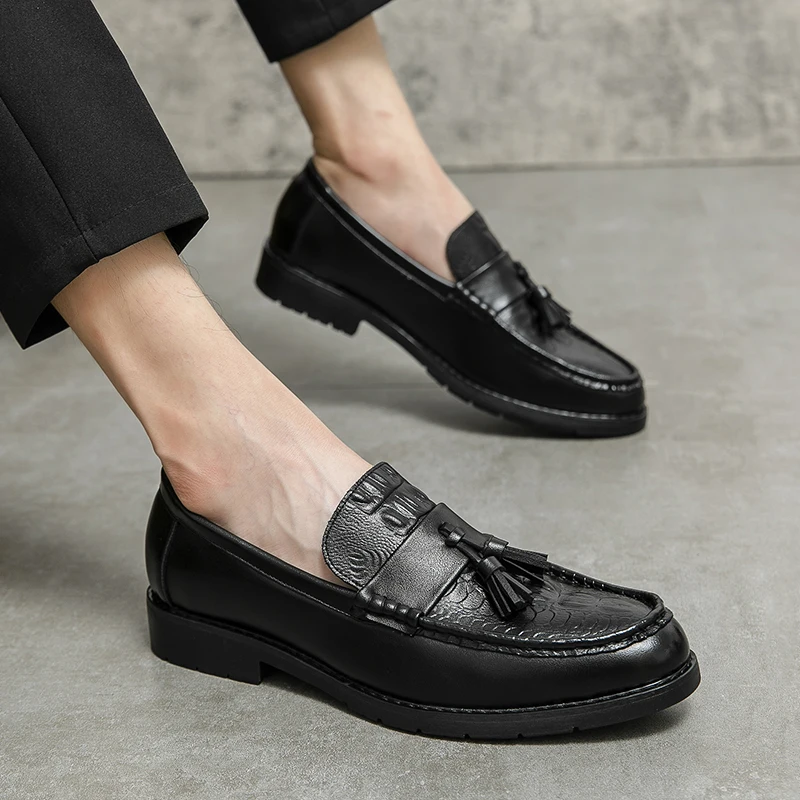
Conditioning Leather: The Key to Longevity
Conditioning is perhaps the most crucial step in leather care. Without it, leather loses its natural oils, becoming dry, stiff, and prone to cracking.
Tip: Think of leather conditioning like moisturizing your skin – it replenishes essential oils and keeps the material supple and resilient.
Selecting the right conditioner:
* For full-grain and top-grain leather: Natural oil-based conditioners (neatsfoot oil, mink oil)
* For finished leathers: Cream conditioners with wax components
* For light-colored leathers: Colorless, non-darkening formulations
Proper conditioning technique:
1. Apply a small amount to a clean cloth (never directly to leather)
2. Work in using circular motions, focusing on one section at a time
3. Allow to absorb for 10-15 minutes
4. Buff with a clean cloth to remove excess
Conditioning frequency:
* Dry climate: Every 3-4 months
* Humid climate: Every 6 months
* High-use items: More frequently as needed
* Items in storage: Before storing long-term
Signs of under-conditioning include stiffness, fading color, and a dry appearance. Over-conditioning shows up as a greasy feel, darkening, or oversoftening of structured items. The right balance depends on your climate and how often you use the item.
For footwear specifically, quality women’s leather flat loafers benefit greatly from regular conditioning to maintain their comfort and appearance throughout years of wear.
Weather-Proofing and Protecting Leather
After cleaning and conditioning, adding protection is the final step in comprehensive leather care. This creates a barrier against water, stains, and environmental damage.
Protectant options:
* Spray protectors: Easy to apply, best for larger surfaces and suede
* Wax-based protectors: Provide more robust protection, ideal for footwear
* Cream protectors: Good for handbags and smaller items, often include conditioning properties
Application techniques for spray protectants:
1. Hold can 6-8 inches from leather surface
2. Apply in light, even coats
3. Allow to dry completely between coats (usually 15-20 minutes)
4. Apply at least two coats for optimal protection
Wax-based protectant application:
1. Apply a thin layer with a clean cloth
2. Work into seams and high-exposure areas
3. Let sit for 10 minutes
4. Buff to a soft shine with a clean cloth
For items that see heavy use like women’s leather heeled loafers, focus extra protection on high-wear areas such as the toe box, heel, and areas that flex during walking.
Testing for effective protection:
Sprinkle a few drops of water on the surface. If they bead up, your protection is still working. If they start to absorb, it’s time to reapply.
Seasonal considerations matter too—apply additional protection before rainy seasons or winter months when exposure to water and salt is higher.
Suede Care: Daily and Weekly Maintenance
Suede requires a completely different approach to care than smooth leather. The key is maintaining its distinctive napped texture while preventing stains and matting.
Daily maintenance:
1. Brush suede after each wear with a suede brush
2. Brush in one direction to avoid damaging the nap
3. Use the brush to remove any surface dirt or dust
4. Address any marks or flattened areas immediately
Weekly maintenance:
1. Give a more thorough brushing with a suede brush
2. Use the brush to raise and refresh the nap
3. Check for any spots or stains that need attention
4. Inspect for areas that may need protection reapplication
Brushing techniques:
* For general maintenance: Brush in the direction of the nap with gentle pressure
* For flattened areas: Brush back and forth to raise nap
* For stubborn areas: Use a terry cloth towel with the brush for more texture
Proper storage is equally important—never compress suede items, use shoe trees for footwear, and keep items away from moisture and direct sunlight. For specialized guidance on maintaining the appearance of suede footwear care, proper brushing techniques can significantly extend the life of your favorite items.
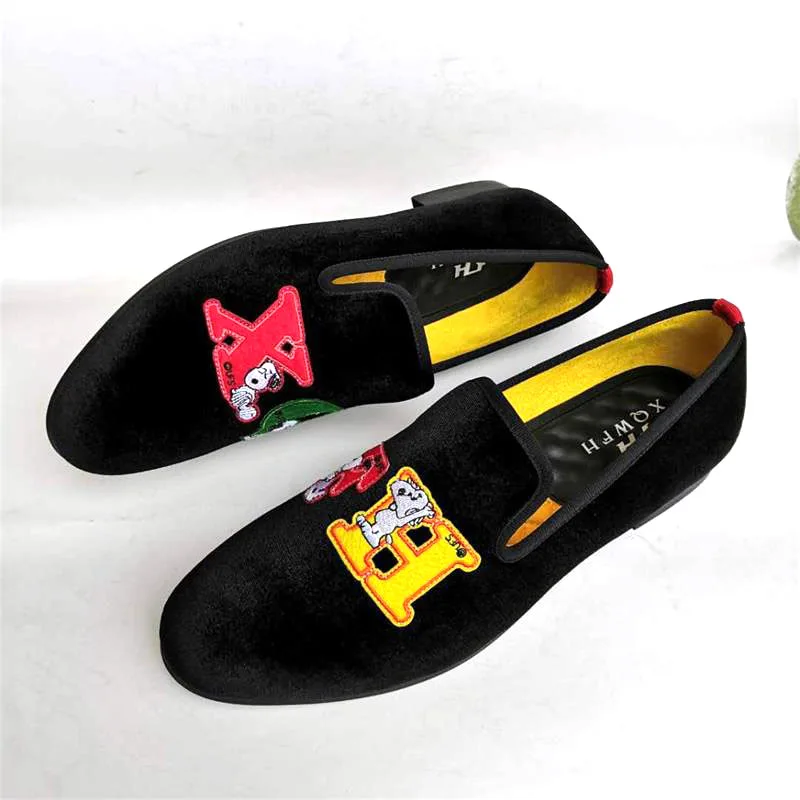
Cleaning Suede: Safe Techniques for Different Stains
Cleaning suede requires patience and caution, as water-based cleaning methods can cause permanent damage. Always start with the least invasive approach.
Dry cleaning methods (preferred):
* For light dirt and dust: Use a suede brush with gentle strokes
* For scuff marks: Use a suede eraser with light pressure
* For oil-based stains: Apply cornstarch or talcum powder, let sit overnight, brush away
* For dried mud: Allow to dry completely, then brush away gently
Emergency response for fresh stains:
1. Blot (never rub) immediately to absorb excess liquid
2. Apply absorbent powder (cornstarch, baking soda) to draw out moisture
3. Let dry naturally without applying heat
4. Brush gently once completely dry
For stubborn stains (last resort):
1. Use specialized suede cleaner according to instructions
2. Apply with a clean cloth, not directly on suede
3. Use minimal product and moisture
4. Allow to dry completely before brushing
Different stains have different success rates with these methods:
* Water stains: 70-80% success with proper drying and brushing
* Oil stains: 50-60% success if treated immediately
* Ink stains: 30-40% success, often need professional help
For valuable items like women’s suede flat loafers, attempting to clean severe stains yourself might do more harm than good. When in doubt, consult a professional leather specialist.
Protecting and Reviving Suede
Unlike leather, suede doesn’t need conditioning, but it does require protection and occasional revival to maintain its appearance and texture.
Protecting suede properly:
1. Choose a protector specifically formulated for suede
2. Apply to clean, dry suede in a well-ventilated area
3. Hold spray 6-8 inches away and apply evenly
4. Apply two light coats rather than one heavy coat
5. Allow to dry fully between coats (at least 30 minutes)
Reviving flattened or matted suede:
1. Use a suede brush to gently raise the nap
2. For stubborn areas, lightly steam by holding item over boiling water (keep 6 inches away)
3. Immediately brush while still warm to lift fibers
4. Allow to dry completely before using
Steam treatment safety:
* Keep item at least 6 inches from steam source
* Expose for no more than 10 seconds at a time
* Brush immediately after steaming
* Allow to dry completely before wearing
For suede that has been exposed to moisture, protecting suede loafers from water damage requires immediate action. Stuff with paper towels to maintain shape, allow to dry naturally away from heat, and brush gently once dry to restore the nap.
Color restoration for faded suede typically requires professional intervention, though specialized suede dyes are available for minor touch-ups.
Women's Comfortable Flat Loafers, Women's Leather Flat Loafers, Women's Round Toe Flat Loafers
$124.88 Select options This product has multiple variants. The options may be chosen on the product pageWomen's Loafer Mules, Women's Suede Flat Loafers
$190.23 Select options This product has multiple variants. The options may be chosen on the product pageWomen's Classic Tassel Loafers, Women's Suede Penny Loafers
Price range: $133.16 through $147.56 Select options This product has multiple variants. The options may be chosen on the product pageWomen's Block Heel Loafers, Women's Leather Heeled Loafers, Women's Square Toe Flat Loafers
$109.84 Select options This product has multiple variants. The options may be chosen on the product pageWomen's Block Heel Loafers, Women's Leather Flat Loafers, Women's Leather Penny Loafers
$295.19 Select options This product has multiple variants. The options may be chosen on the product pageWomen's Comfortable Flat Loafers, Women's Leather Flat Loafers
Price range: $187.31 through $197.21 Select options This product has multiple variants. The options may be chosen on the product page
Storing Leather and Suede Items Properly
Proper storage prevents unnecessary damage when items aren’t in use, whether for a season or just overnight.
Ideal storage environment:
* Temperature: 65-72°F (18-22°C)
* Humidity: 40-60%
* Air circulation: Moderate
* Lighting: Away from direct sunlight
Storage checklist for leather items:
– [ ] Clean and condition before storing
– [ ] Stuff bags and shoes to maintain shape
– [ ] Use wooden hangers for garments (no wire hangers)
– [ ] Cover with breathable cloth (not plastic)
– [ ] Store away from heat sources and sunlight
– [ ] Check periodically for dust or mold
Storage checklist for suede items:
– [ ] Brush thoroughly before storing
– [ ] Use shoe trees for footwear (unfinished cedar is best)
– [ ] Store in dust bags or pillowcases (not plastic)
– [ ] Keep items separated to prevent color transfer
– [ ] Maintain shape with proper stuffing
Common storage mistakes to avoid:
* Plastic covers that trap moisture
* Stacking items that can create permanent creases
* Hanging heavy leather items that can stretch
* Storing in attics or basements with temperature fluctuations
Quality items like women’s suede penny loafers deserve proper storage to maintain their appearance and extend their lifespan.
How to Handle Specific Leather and Suede Items
Different leather and suede items face unique challenges based on their use and exposure. Here’s how to address specific items:
Footwear:
* Insert shoe trees immediately after wearing
* Rotate pairs to allow 24 hours of rest between wears
* Use edge dressing on soles and heels as needed
* Pay special attention to salt stains in winter months
* Address creasing in the toe box area by using shoe trees
Handbags and purses:
* Clean handles and corners more frequently (high-touch areas)
* Use purse organizers to maintain structure
* Clean hardware with appropriate metal cleaner
* Stuff bags when not in use to maintain shape
* Store upright, never hanging by handles
Garments:
* Use proper hangers that support the weight
* Clean the collar, cuffs, and underarm areas more thoroughly
* Avoid hanging suede garments (fold with tissue paper)
* Keep leather jackets on padded hangers
* Allow space between garments in closet
Furniture and upholstery:
* Vacuum regularly with soft brush attachment
* Rotate cushions to distribute wear evenly
* Keep away from direct sunlight and heat sources
* Test cleaners on hidden areas first
* Address spills immediately
For items like leather loafers with heels, specialized care might include edge dressing on heels and extra conditioning at flex points.
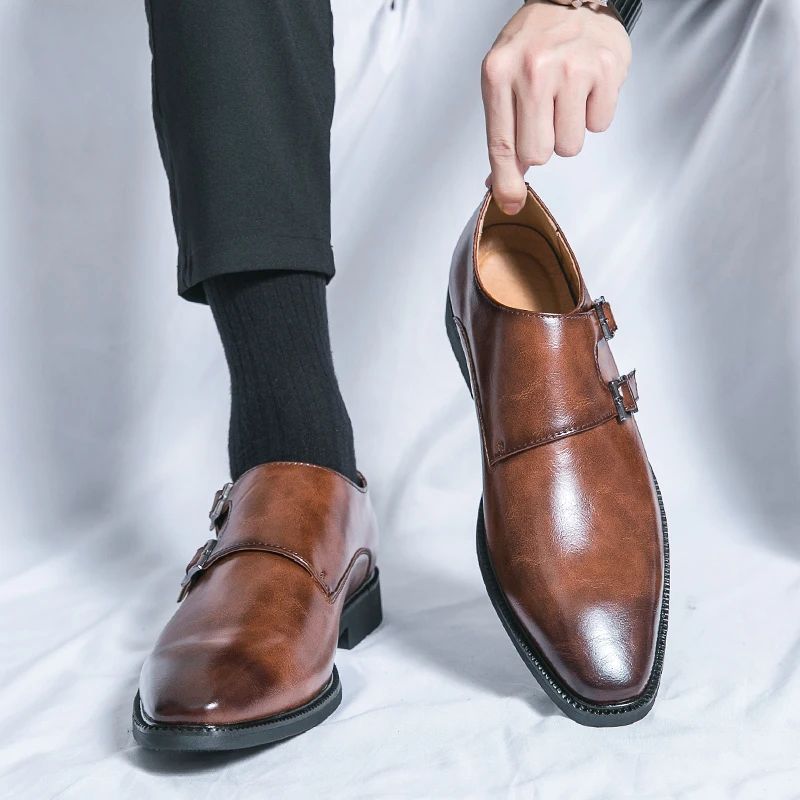
Troubleshooting Common Leather Issues
Q: How can I fix small scratches on leather?
A: For minor scratches, gently rub with your finger to warm the area and redistribute oils. For deeper scratches, apply a small amount of leather conditioner, let it absorb, and buff gently.
Q: My leather has faded in some areas. Can I restore it?
A: Leather cream with color can help even out mild fading. Apply sparingly with a cloth, allow to dry, and buff. For significant fading, consult a professional.
Q: How do I deal with water spots on leather?
A: Allow the area to dry naturally (no heat), then apply leather conditioner to the entire piece, not just the spotted area. This helps blend the water mark with surrounding leather.
Q: What can I do about mold on leather items?
A: Take the item outside, brush away visible mold with a soft brush, then wipe with a cloth dampened with equal parts water and isopropyl alcohol. Allow to dry completely, then condition.
Q: My leather feels stiff. How can I soften it?
A: Apply a quality leather conditioner, working it in with circular motions. For severely stiffened leather, consider a specialized leather softener, followed by conditioning.
Q: The surface of my leather is peeling. Can it be fixed?
A: Peeling usually indicates bonded or genuine leather with a wearing surface coating. Minor peeling can be addressed with leather paint, but extensive peeling may require professional refinishing.
Understanding whether suede or leather is easier to care for depends on your lifestyle and the specific item, but both can be maintained successfully with the right approach.
Rescuing Suede from Common Problems
Q: Can water-damaged suede be saved?
A: Blot excess water immediately, insert shoe trees or stuffing to maintain shape, let dry naturally away from heat, then brush gently once completely dry to restore the nap.
Q: How do I remove oil stains from suede?
A: Apply cornstarch or talcum powder immediately, letting it sit for 24 hours to absorb the oil. Brush away powder, then use a suede eraser for any remaining marks.
Q: My suede has discolored patches. What can I do?
A: Try a gentle brushing first. For persistent discoloration, specialized suede cleaners matched to your item’s color may help. Severe cases may require professional dyeing.
Q: How do I remove salt stains from suede boots?
A: Mix equal parts water and white vinegar, apply sparingly with a cloth (not directly on suede), blot excess, let dry, then brush to restore nap.
Q: My suede has an uneven texture. How can I fix it?
A: Use a suede brush to brush in one direction, then use light steam from a kettle (held 6 inches away) and immediately brush while warm to restore texture uniformity.
Q: When is suede damage beyond DIY repair?
A: Deep stains that have set for days, severe water damage causing rigid texture, or color loss affecting more than 25% of the visible surface typically require professional attention.
Different types of leather heeled loafers may respond differently to these treatments based on their specific leather processing and finishing techniques.
When to Seek Professional Care
While many leather and suede issues can be addressed at home, certain situations warrant professional help:
Signs that DIY care isn’t sufficient:
* Deep, set-in stains that haven’t responded to home treatments
* Structural damage like tears, holes, or separated seams
* Significant color loss or uneven coloration
* Hardened or cracked leather that doesn’t respond to conditioning
* Mold that returns after home treatment attempts
* Hardware problems (zippers, clasps, etc.)
Finding a reputable leather specialist:
* Ask for recommendations from high-end retailers
* Look for specialists with 5+ years of experience
* Request before/after photos of similar repairs
* Check reviews specifically mentioning your type of item
* Confirm they have experience with your specific material
Questions to ask professionals:
1. What process will you use for this specific issue?
2. What results can I realistically expect?
3. Is there any risk of further damage?
4. How long will the repair take?
5. What care recommendations do you have after service?
Professional treatment typically costs $30-$200 depending on the item and service required. For valuable items, this investment often makes more sense than replacement.
FAQ: Your Most Common Leather and Suede Questions Answered
Q: Can I use the same products on both leather and suede?
A: No. Leather products often contain oils and waxes that would damage suede’s nap. Always use products specifically formulated for each material.
Q: How often should I clean and condition my leather items?
A: For items worn regularly, clean every 1-2 months and condition every 3-6 months. Climate and usage patterns may require adjustments to this schedule.
Q: Are homemade cleaners safe for leather or suede?
A: Most homemade solutions are too harsh or unpredictable for quality leather and suede. Commercial products are formulated with specific pH levels and ingredients that won’t damage the materials.
Q: Can damaged suede be restored to like-new condition?
A: Minor damage can often be significantly improved, but severe water damage, deep stains, or worn areas with lost nap cannot be completely restored to new condition.
Q: Is professional cleaning worth the cost?
A: For valuable items, yes. Professionals have specialized equipment, products, and techniques not available to consumers. The cost of professional service is typically much less than replacing quality leather or suede items.
Q: How can I tell real leather from synthetic materials?
A: Real leather has an irregular grain pattern, absorbs small amounts of moisture, has a distinctive natural smell, and develops a patina over time. Synthetic materials have perfectly uniform patterns and don’t absorb moisture or develop patina.
Specialized Care for Premium and Exotic Leathers
Premium and exotic leathers require special attention beyond standard leather care practices:
Patent Leather:
* Clean with a damp cloth and mild soap specifically for patent leather
* Never use alcohol-based products, which can strip the finish
* Apply patent leather cream to restore shine
* Address scuffs with petroleum jelly applied sparingly
Exotic Leather Care:
* Alligator/Crocodile: Use specialized reptile leather conditioner, focus on scale edges
* Snake: Clean with dry cloth only, condition minimally to avoid scale lifting
* Ostrich: Clean quill dots gently with soft brush, condition lightly
* Stingray: Wipe with barely damp cloth, never saturate
Nubuck Care:
Nubuck falls between leather and suede in care requirements:
* Use a nubuck-specific brush with rubber teeth
* Clean with products formulated specifically for nubuck
* Apply protector designed for nubuck’s unique texture
* Never apply leather conditioners meant for smooth leather
Specialty Dyes and Finishes:
* Hand-painted leather requires specific cleaners that won’t affect the artisan’s work
* Metallic finishes need gentle cleaning without abrasion
* Aniline-dyed leather (unprotected) requires extra care to avoid water spots
Vegetable-tanned vs. Chrome-tanned:
* Vegetable-tanned leather develops a beautiful patina but needs more frequent conditioning
* Chrome-tanned leather is more resistant to water but benefits from pH-balanced cleaners
At Artisan Haul, we believe that quality leather and suede goods are investments worth protecting. With proper care, these timeless materials can provide beauty and function for many years, becoming even more beautiful with age.

